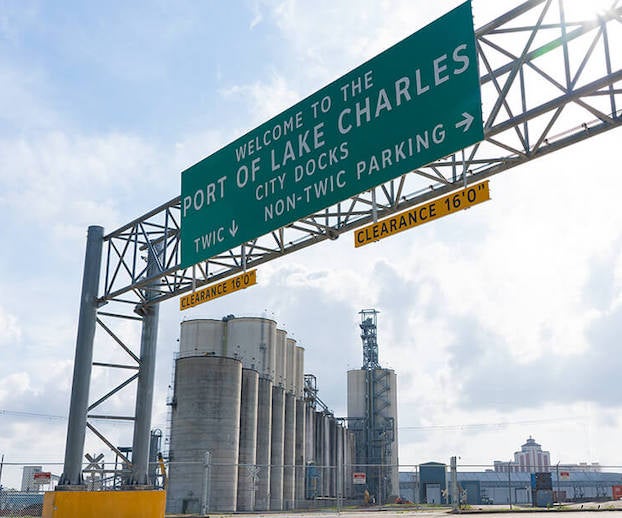Port helps local rice producers deliver to international markets
Published 7:14 pm Thursday, January 13, 2022
Rice has a special place when it comes to the hearts and dinner tables of Southwest Louisiana. It’s also a staple in the area’s economy, courtesy of area rice producers.
Local rice producers have shipped milled rice to overseas markets through the Port of Lake Charles for nearly a century. More recently, they have sought new markets for “rough rice,” or unmilled rice, and have—since 2015—exported 543,000 short tons of rough rice from the bulk grain terminal facility on Port property.
One of those local rice producers is Carl J. Krielow, president of the Lake Charles Harbor and Terminal District’s Board of Commissioners. He’s also a member of the Louisiana Independent Rice Producers Association and the U.S. Rice Producers Association.
“Rice is more than a legacy cargo at the Port of Lake Charles,” Krielow said. “It’s a commodity with growing foreign demand. A growing local sector is rough rice, and the Port is a pathway for local producers to get rice to more markets, at a better price.”
For more than a decade, producers have had another nearby option for moving out rough rice: the South Louisiana Rail Facility in Lacassine.
The rail loading facility operates on behalf of more than 200 area rice producers and business people. It is owned by the Jeff Davis Parish Police Jury and located on land owned by the Louisiana Agricultural Finance Authority.
The facility has gone from loading its first railroad car, in 2012, to loading ships at the Port of Lake Charles.
“We started with the idea of creating additional marketing options for our group,” said Mark Pousson, the facility’s manager.
“We loaded the very first vessel at the new terminal (at the Port) in 2015, as a group of producers, to a Mexican rice buyer,” he said.
Since then, 24 more vessels have transported rough rice from the Port, according to TherranceChretien, the Port’s director of cargo and trade development.
Krielow said the Port’s partnership with rice producers is an economic win-win.
Meanwhile, the rail facility is adding a $21 million rice milling facility near its Lacassine loading terminal. It’s a five-story, 15,000-square-foot structure that is expected to be ready by the next harvest.
“This is an opportunity to add even more value — to produce and ship rice across the world. This will bring economic benefits for generations to come,” said Gov. John Bel Edwards at last year’s groundbreaking ceremony. “It also provides more options for our rice producers. We can produce rice in the form our customers want, whether it’s milled or rough.”
Economic opportunities such as rough rice exports go hand-in-hand with the Port’s own mission.
“We’re energized to be part of efforts like these that serve and build the Southwest Louisiana economy,” said Port Executive Director Richert L. Self.
Rice is part of the total marine cargo activity along the Calcasieu Ship Channel that supported $39 billion of total economic value to the U.S. economy last year, according to Self. That also represented more than $12 billion of economic value locally — or about 67 percent of the Lake Charles area’s gross domestic product (GDP) in 2020.
Krielow said the Port is a vital component in supporting local agriculture.
“The Port serves the world,” he said. “We’re seeing local rice farmers reaching more markets in Mexico and other parts of the world, and at better prices — and the Port continues to offer a dependable pathway for them.”






